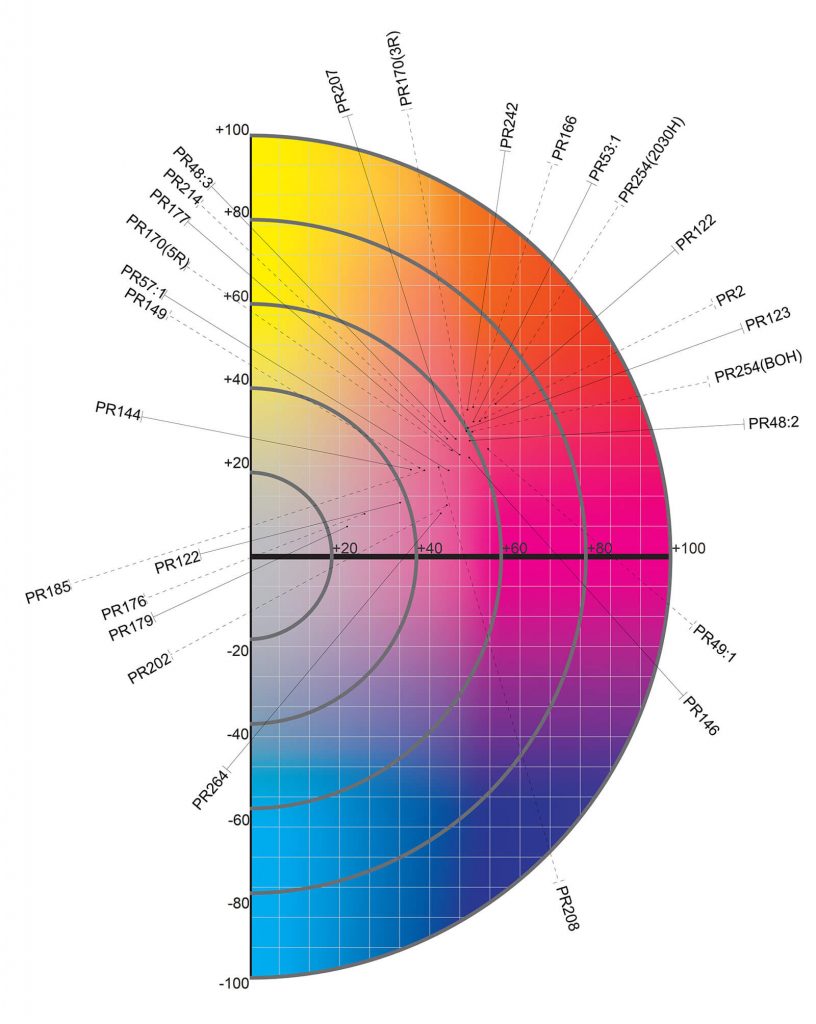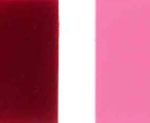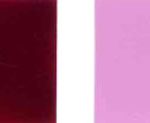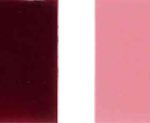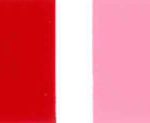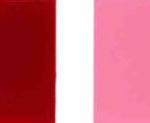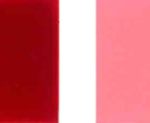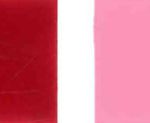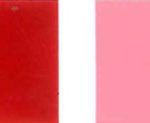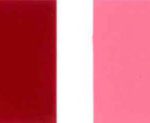Pula nga Pula 146-Corimax Pula nga FBB02
Pigment Red 146 is a blue shade semi-transparent napthol red with good overall fastness properties. It isi a possible alternative to Pigment Red 57:1 types where an improvement in fastness properties is needed.
Technical parameters of Pigment red 146
| Ang kolor sa Index No. | Pula nga Pula 146 |
| Ngalan sa produkto | Corimax Red FBB02 |
| Kategoriya sa produkto | Bulawan sa Organiko |
| Numero sa CAS | 5280-68-2 |
| Numero sa EU | 226-103-2 |
| Pamilya sa Kemikal | Mono azo |
| Timbang nga Molekular | 611.04 |
| Pormula sa Molekular | C23H27CIN4O6 |
| Gipatin-aw ang PH | 6.0-7.0 |
| Densidad | 1.6 |
| Pagsuyup sa Langis (ml / 100g)% | 40-50 |
| Kahayag nga Kape (Pag-ayo) | 5-6 |
| Pagpugong sa Pag-init (panapton) | 180 |
| Kahayag nga Kape (plastik) | 7 |
| Pag-init sa Pag-init (plastik) | 240 |
| Pagbatok sa Tubig | 4 |
| Pagbalhin sa lana | 5 |
| Pagsukol sa Asido | 4 |
| Pagbatok sa Alkali | 4 |
Kolor | 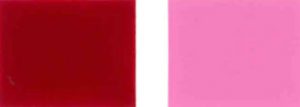 |
| Pagpanagtag sa hue |
Aplikasyon:
Recommended for printing paste, water based ink, solvent ink, UV ink.
Suggested for PU, offset ink.
Pula nga Pula 146 is recommended for use in letterpress and offset inks, and also in packaging gravure and flexographic printing. Additional uses can be found in the coatings industry for interior industrial finishes, architectural and emulsion paints. Other areas of use can include water based inks, textile printing, artist colors and for the coloration of paper.
TDS(Pigment Red 146) MSDS(Pigment Red 146)May Kalabutan nga Impormasyon
Pigment Red 146 (Pigment Red 146) is blue-red and slightly yellowish than Pigment Red 57: 1. The specific surface area of Permanent Carmine FBB 02 is 36 m2 / g. It is mainly used in ink and coatings. The solvent resistance and sterilization of printed samples are better than Pigment Red 57: 1, heat resistance 200 ℃ / 10min, 20 ℃ higher than Pigment Red 57: 1, light resistance 5 grades, and better than Pigment Red 57: 1 high 0.5-1 grade; lightfastness is 7 (1 / 1SD) on fabric printing; it can also be used in latex paints and architectural coatings to form non-transparent red with molybdenum chromium orange; rigid PVC coloring has a lightfastness of 8 Grade; make brown with pigment yellow 83 and carbon black for wood coloring.
aliases:
12485; C.I.Pigment Red 146; P.R.146; Naphthol Carmine FBB; Permanent Carmine FBB; N-(4-chloro-2,5-dimethoxyphenyl)-3-hydroxy-4-[[2-methoxy-5-[(phenylamino)-carbonyl]phenyl]azo]-2-Naphthalenecarboxamide(4Z)-N-(4-chloro-2,5-dimethoxyphenyl)-4-{2-[2-methoxy-5-(phenylcarbamoyl)phenyl]hydrazinylidene}-3-oxo-3,4-dihydronaphthalene-2-carboxamide; N-(4-chloro-2,5-dimethoxy-phenyl)-3-hydroxy-4-[2-methoxy-5-(phenylcarbamoyl)phenyl]azo-naphthalene-2-carboxamide.
Molekular nga istruktura: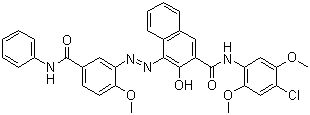
The Pigment Red 146, with the CAS registry number 5280-68-2, has the IUPAC name of (4Z)-N-(4-chloro-2,5-dimethoxyphenyl)-4-[[2-methoxy-5-(phenylcarbamoyl)phenyl] hydrazinylidene]-3-oxonaphthalene-2-carboxamide. And it belongs to the product categories of Organics, and it is usually applied in the coloration of painting, oil, plastic, and print paste.
Pisikal ug kemikal nga kabtangan
Hue o kolor nga kolor: asul nga pula nga pula
Relative density: 1.35-1.40
Daghang density / (lb / gal): 11.2-11.6
Melting point / ℃: 318-322
Average nga gidak-on sa tipik / μm: 0.11
Pormula sa partikulo: gamay nga flake
Specific surface area / (m2 / g): 36-40
pH value / (10% slurry): 5.5
Oil absorption / (g / 100g): 65-70
Gahum sa pagtabon: translucent
Relative density: 1.33g / cm3
The characteristics of this chemical are as below:
(1)ACD/LogP: 5.18;
(2)# of Rule of 5 Violations: 3;
(3)ACD/LogD (pH 5.5): 7;
(4)ACD/LogD (pH 7.4): 7;
(5)#H bond acceptors: 10;
(6)#H bond donors: 3;
(7)#Freely Rotating Bonds: 9;
(8)Polar Surface Area: 127.35;
(9)Index of Refraction: 1.641;
(10)Molar Refractivity: 164.877 cm3;
(11)Molar Volume: 457.007 cm3;
(12)Polarizability: 65.362×10-24 cm3;
(13)Surface Tension: 49.856 dyne/cm;
(14)Density: 1.337 g/cm3;
(15)Exact Mass: 610.161912;
(16)MonoIsotopic Mass: 610.161912;
(17)Topological Polar Surface Area: 127;
(18)Heavy Atom Count: 44;
(19)Complexity: 1090.
Additionally, you could convert the following datas into the molecular structure:
(1)Canonical SMILES: COC1=C(C=C(C=C1)C(=O)NC2=CC=CC=C2)NN=C3C4=CC=CC=C4C=C(C3=O)C(=O)NC5=CC(=C(C=C5OC)Cl)OC
(2)Isomeric SMILES: COC1=C(C=C(C=C1)C(=O)NC2=CC=CC=C2)N/N=C\3/C4=CC=CC=C4C=C(C3=O)C(=O)NC5=CC(=C(C=C5OC)Cl)OC
(3)InChI:
InChI=1S/C33H27ClN4O6/c1-42-27-14-13-20(32(40)35-21-10-5-4-6-11-21)16-26(27)37-38-30-22-12-8-7-9-19(22)15-23(31(30)39)33(41)36-25-18-28(43-2)24(34)17-29(25)44-3/h4-18,37H,1-3H3,(H,35,40)(H,36,41)/b38-30-
(4)InChIKey:
GBDJNEJIVMFTOJ-ZREQDNEKSA-N
